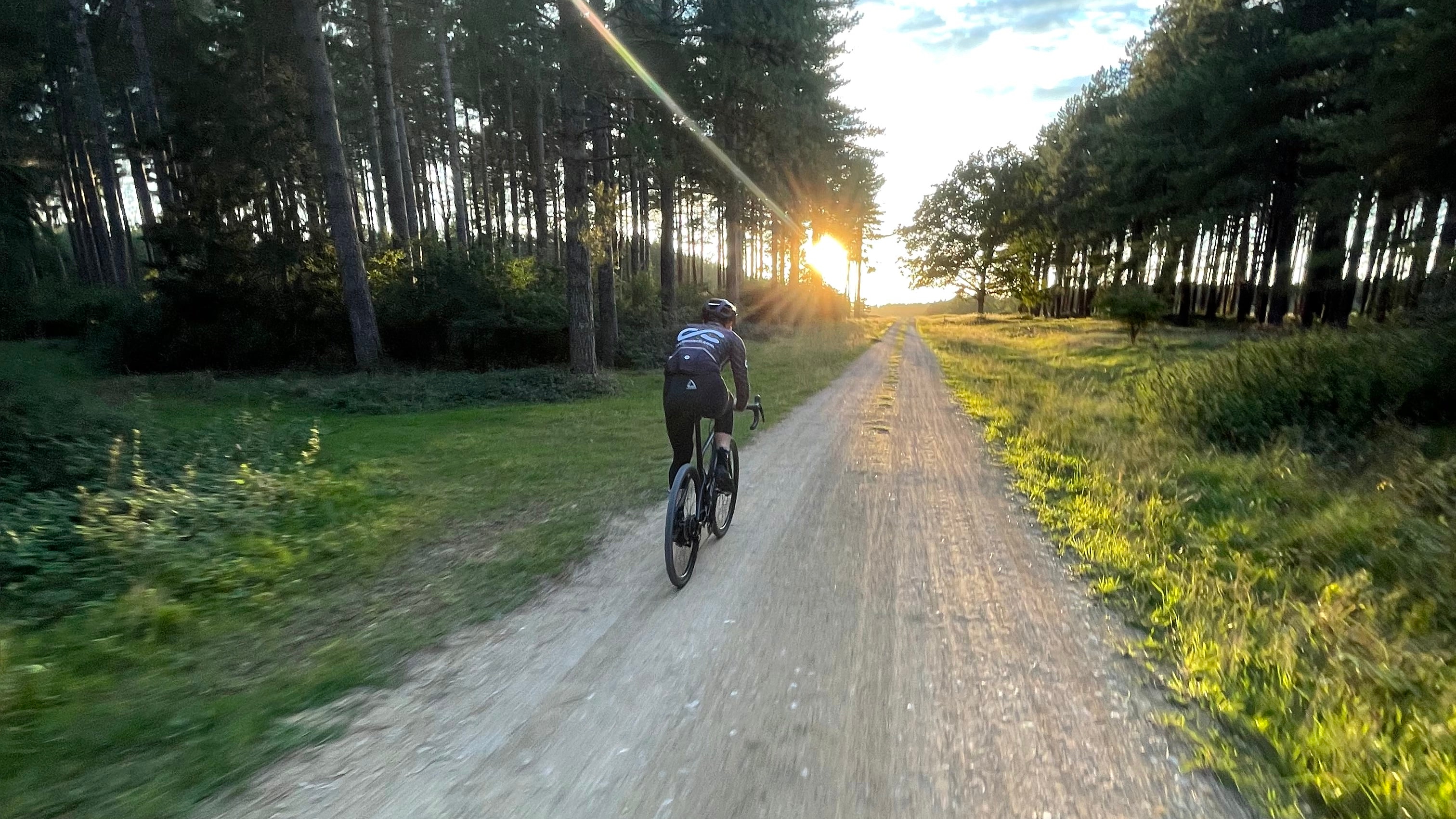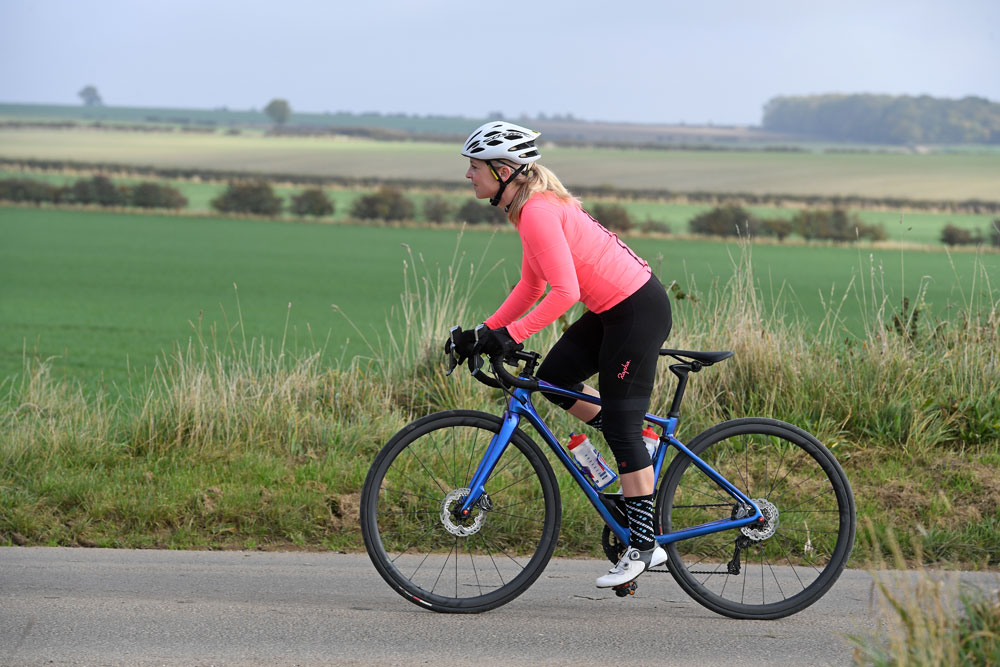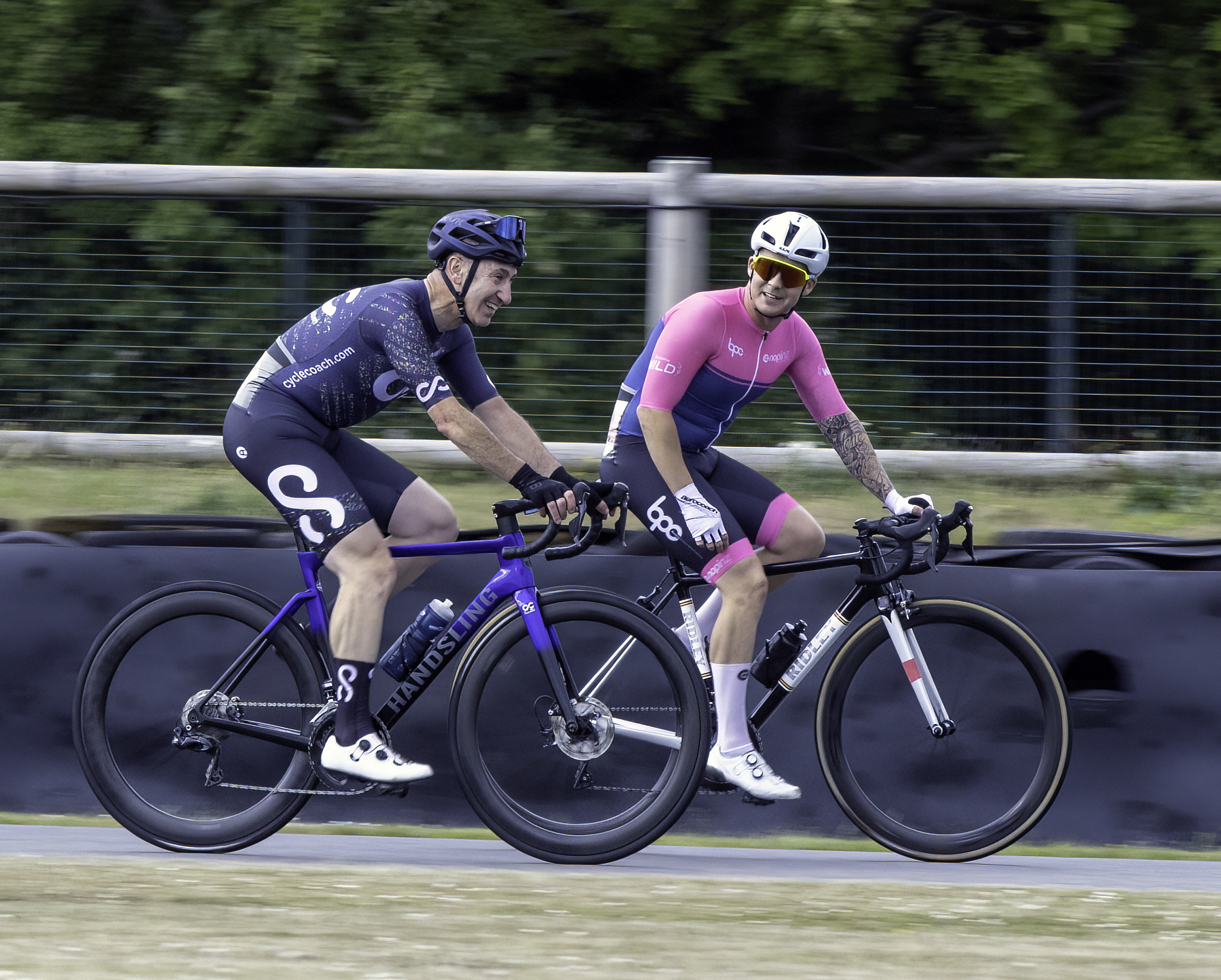‘Cycling saved my life - and I’m fitter at 55 than I was at 25’ - cycling coach still gaining watts explains how
The term 'FTP' hadn't been invented when Richard Stern first tested his, but he's stronger now than he was in 1995


Cycling is an activity, or sport, you can enjoy at any age. Fitness writer Hannah Reynolds has been speaking to cyclists in their 40s, 50s, 60s, 70s and beyond, bringing tips, advice and inspiration from cyclists who are still pedalling as the decades progress.
“Cycling is probably the most important thing in my life,” cyclist and coach Richard Stern tells Cycling Weekly. The 55-year-old’s consistency would certainly attest to this. “I was 14 when I started racing in 1984 and I haven’t missed a year since! I am about to start my 41st consecutive year of racing,” he says. Well into his fifth decade, he’s still getting faster, and has been riding daily for over seven years.
There’s more to Richard’s resilience than love for the sport. At the age of 12, he was hospitalised with what transpired to be juvenile rheumatoid arthritis. “Cycling saved me when I came out of hospital. I wanted to prove everyone wrong, that despite my illness, I could still do it,” he says.
Richard’s case was severe, “it was everywhere in all my joints, it even affected my eyes. I was the first person in the UK to have laser eye surgery.” After such a debilitating illness many people would have started back into sport slowly but Richard went straight into bike racing.
“I had been in a wheelchair for two years and had just started to walk again at 14. However, I really wanted to try bike racing.” Understandably it took time for Richard to develop fitness and race skills and it took him until he was 20 to get to what he calls a ‘decent level’: a 1st category licence (in 2024, there are just 54 first category licence holders registered with British Cycling, across open and female categories).

Richard (riding the blue Handsling bike) has raced every year for 41 seasons
Cycling not only gave Richard a sense of purpose as he recovered from illness, it has provided him with a lifelong career as a cycle coach. Years of immersion in cycling has given him some interesting perspectives, “back in the mid-90’s I started a sport science degree at Brighton University. It was in the early days of power meters and lab testing and I’ve had a power meter since then.” Having more than two decades of data to look back on means that Richard can very accurately see how his cycling performance has changed as he has aged and the figures look good.
“The term FTP had not been invented in 1995 when I did my first power test but I was able to hold 270 W for 48-mins, this was part of my doctoral work on critical power. I also had a 5-sec sprint power of 842 watts. Now my 5 second sprint power is 988 watts and my FTP is 280 watts. I’m still the same weight – 64kg. I am currently - at 55-years-old fitter than I was at 25!”
Get The Leadout Newsletter
The latest race content, interviews, features, reviews and expert buying guides, direct to your inbox!
So, with the personal knowledge of his data and professional knowledge of coaching what does Richard think has changed? “There has been an increase in the amount of coaching knowledge. Back in my twenties there was sport science research available but power meters were still very new back then. The body of applied knowledge has increased.” But it has also been a case of ‘do as I say, not as I do’, “even though I was a coach I often didn’t follow the advice in my own riding I’d give to other people,” Richard confesses a little wryly, “now I’m thinking about my training a lot more. I do weight training which has added 150 watts to my sprint power. I’m a lot stronger now than when I was younger. I’m in the gym 2-3 times a week doing a range of exercises including squats, plyometrics.”
Consistency and structure is the foundation of fitness as nearly every coach preaches. “Over the year on average I probably train about 15 hours a week on the bike and two hours in the gym. I think I am more regimented in my training now. My recovery has dropped off a little tiny bit but thinking about my training in a better way has meant that I have been able to maintain my fitness.”
Diet is an important consideration for all athletes, but particularly as we age, “I’m really focused on my diet now, in the last few years I have upped my protein which I struggled with as I have been a vegetarian for most of my life now. Trying to eat 130g of protein a day was quite difficult – I found the way forward was protein shakes.”
If you can be fitter at 55 than you were at 25 does it mean your 25-year-old self could have been a better athlete? “I do wonder what would have happened if I had done some of this stuff earlier. I don’t think it would have improved me enough to make me a pro which is what I wanted, but I could have been a bit a better than I was.”
Weight training, osteoporosis and osteopenia
Richard upped his weight training focus in a bid to prevent further injuries.
“Every time I crashed I’d fracture a rib, I started to think there was something wrong, that I should do something about it.” As time went on and he continued to have injuries he visited his Doctor, “I began to wonder if I had osteoporosis – I insisted on a bone scan and it turned out that I did!”
Osteoporosis and to a lesser extent osteopenia is a weakness in the bones, increasing the risk of fractures. Endurance cyclists are particularly susceptible to this condition because of the non-weight bearing nature of cycling and the very strict calorie control that many cyclists inflict on themselves to maintain their race weight. Strength work that loads bones in different planes can help increase bone mineral density preventing or even starting to reverse osteoporosis, whilst clearly ensuring that calorie intake is sufficient to avoid energy deficiency is paramount.
In the past, Richard was very vocal about weight training - feeling it was unnecessary for endurance cyclists - a position that he has now changed, to the extent that he has written an apology for his previous comments. Whilst the motivation for weight training was to strengthen his bones and avoid further injury it also increased his sprint power, but perhaps more importantly reduced his osteoporosis, “it is now only classed as osteopenia”.
Richard is resolutely a road racer although he has raced all time trial distances up to 12 hours, “road racing excites me more.” He still competes in mixed category as well as master’s racing events, however the broken bones have left a reluctance to get involved in the riskier elements of racing “my fitness is definitely there but in a crowded bunch I don’t feel comfortable. I don’t like bunch sprints anymore. My race craft is good and I’d rather get a way in a group or small break.”
An every-day cyclist

7.5 years without a day off - and counting
Drawing inspiration from runner Ron Hill and two time Transcontinental winner James Haydon - who he coached - Richard has set himself the challenge of cycling every day. “I have now done 7.5 years without a day off! I have to fit cycling in around everything, it is slightly annoying for my partner. Now I would like to ride every day until I pop my clogs!” Ron Hill had a continuous running streak of 52 years and 39 day so Richard still has some way to go, “I have had a look in the Guinness Book of Records and I haven’t found anyone else who has kept up a continuous record of cycling.”
As a coach, Richard knows that recovery is paramount, too - some days may involve a short, easy spin; “my rule is that I do at least 20 minutes a day” he says “that can be any kind of cycling, in wet cold weather it is indoors on the trainer. I had to have a general anaesthetic and the surgeon was amazed that I intended to cycle on the day of the operation and the next day as well.”
Looking back, it is the years in a wheelchair that formed the basis for his cycling career, “if I had not been an ill child I’m not sure if I would have been as committed to cycling throughout my life time as I have been.” For Richard cycling has become a huge part of his identity as well as his professional career, “if I had to give up cycling through ill health now I would find that very hard. I have had some long periods of quite horrendous illness but I’ve still be able to cycle around that. I still see myself as an elite athlete – I don’t mean in my racing level but in my attitude and approach to how I train and race. I vaguely have my eye on the world hour record for when I’m in my late nineties! By and large I love cycling and can’t contemplate giving it up! I want to be riding until I die.”
“As a kid I wanted to ride the Tour De France and be a pro cyclist, there was nothing more exciting than cycling and racing when I was younger. I had been quite depressed during the time I was in the hospital and in a wheelchair. Cycling saved me because it gave me something to work towards and get better at. I’m still slightly astounded that I am better now than I was in my twenties.”

Thank you for reading 20 articles this month* Join now for unlimited access
Enjoy your first month for just £1 / $1 / €1
*Read 5 free articles per month without a subscription

Join now for unlimited access
Try first month for just £1 / $1 / €1
Hannah Reynolds interest in cycling began while studying for a degree in Sports Science at the University College Chichester and surrounded by elite level cyclists. She is now undertaking a PhD at Sheffield Hallam University investigating the use of e-bikes by older people.
A committed dabbler whose passion outweighed her talent Reynolds has competed across all disciplines of cycling bar BMX. In the very distant past she has been south-east road race champion, southern cyclo-cross champion and finished third in the European 24hr Solo mountain-bike champs in 2011. She was also the Fitness Editor of Cycling Weekly for 15 years.
Hannah Reynolds is author of several cycling books, France-en-Velo a guide to the ultimate 1000 mile cycle route from the Channel to Med; Britain's Best Bike Ride. LEJOG1000; A 1000 mile journey from Land's End to John o' Groats and 1001 Cycling Tips.
-
 'I was calorie counting – I couldn't eat one blueberry over': How one British rider overcame years of underfueling and turned pro
'I was calorie counting – I couldn't eat one blueberry over': How one British rider overcame years of underfueling and turned proA diabetes diagnosis didn’t stop Hamish Armitt from reaching his potential – but an eating disorder almost did
By Tom Davidson
-
 UK government 'recognises concerns' but ignores calls for Tour de France to remain on free-to-air television
UK government 'recognises concerns' but ignores calls for Tour de France to remain on free-to-air televisionA petition which sought to change the way the Tour de France was categorised by the government in order to keep it free to watch from 2026 has been responded to
By Adam Becket